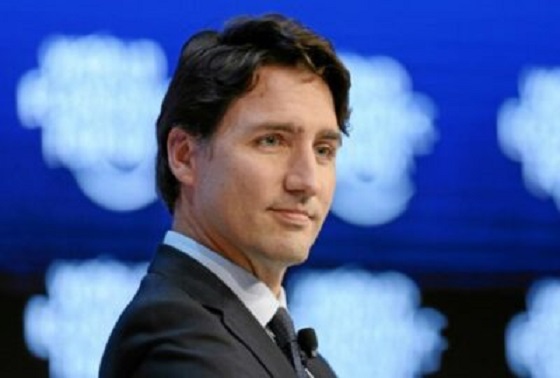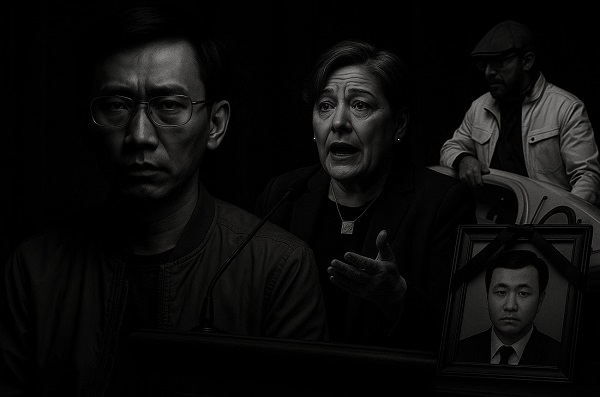Business
Federal government’s redistribution economics doesn’t work

From the Fraser Institute
By Jason Clemens, Jake Fuss, and Milagros Palacios
Prime Minister Trudeau’s vision for a more prosperous Canada relies on a much larger role for the federal government, with more spending, regulation, borrowing and higher taxes. By moving existing money around—both from higher-income workers to average Canadians and from the future to the present through borrowing—he believes the Canadian economy will be stronger and living standards will rise. But after nine years of governing, the evidence is clear—the prime minister’s redistribution economics doesn’t work and has actually reduced living standards in Canada.
Let’s first understand the magnitude of the changes made by the Trudeau government. Federal spending (excluding interest costs on debt) has risen from $256.2 billion in the last year of the Harper government to an estimated $483.6 billion this year, an increase of 88.7 per cent.
Even excluding COVID-related spending, the Trudeau government has recorded the five highest years of federal spending (on a per-person basis, after adjusting for inflation) in the history of the country, far surpassing spending during both world wars and the Great Recession.
Under Trudeau, the federal government has introduced several new programs (including dental care, daycare and pharmacare), and expanded several existing programs such as the cash transfer to families with children under 18 and corporate welfare.
Redistributing existing income has been a clear policy goal of the Trudeau government. From 2015 to 2022, average government transfers to families with children have increased from $12,685 to $15,750 (inflation-adjusted), an increase of 24.2 per cent. Yet among these same families, employment income only increased 8.0 per cent during the same period, meaning government transfers grew more than three times faster than their employment income. And as a share of household income, government transfers have increased from an average of 8.0 per cent between 1995 and 2007, when employment income was growing much faster, to 10.3 per cent in 2022.
The Trudeau government has financed this explosion in federal spending by borrowing, which is simply taxation deferred to the future, and tax increases.
Specifically, the government increased personal income taxes on professionals, entrepreneurs and successful business owners. It also increased taxes on businesses, which is an indirect and less transparent way of increasing taxes on average people since businesses don’t actually pay taxes, only people pay taxes. Higher business taxes mean less investment and thus lower wage growth for workers, lower payments to the business owners, and/or higher prices for consumers buying goods and services.
The Trudeau government also opaquely increased taxes on average Canadians. While it lowered the second personal income tax rate, it simultaneously eliminated several tax credits. As a result, 86 per cent of middle-income families experienced an increase in their personal income taxes as did 75 per cent of families with children in the bottom 20 per cent of income-earners.
But again, the government financed much of its new spending by borrowing, which means future tax increases. Consider that total federal debt stood at a little over $1.0 trillion when the Trudeau government took office in late-2015. By the government’s own estimates, total federal debt will reach almost $2.1 trillion next year.
Higher debt means higher interest costs, which divert money away from programs such as health care or badly needed tax relief. From 2015-16 (when Trudeau was first elected) to this year, federal debt interest costs have increased from $21.8 billion to an expected $54.1 billion. For context, this year the federal government expects to raise $54.1 billion from the GST, which means that every cent raised from the national sales tax will go to pay interest costs on the federal debt.
By focusing on moving around existing income (i.e. redistribution) rather than promoting income growth through investment and entrepreneurship, the Trudeau government has helped produce an outright economic growth crisis. Canada’s current decline in per-person GDP, a broad measure of living standards, is one of the longest and deepest declines of the last 40 years. Moreover, as of the end of 2023, the latest year of available data, the decline in living standards had not stopped so there’s a chance this could be the worst fall in living standards since at least the early-1980s.
According to a 2023 study, growth in per-person GDP from 2013 to 2022 was at its lowest rate since the Great Depression. Indeed, Canada’s post-COVID recovery was the 5th-weakest in the industrialized world. And prospects for the future are no better. A recent study by the OECD estimated that Canada would have the slowest growth in living standards among 32 high-income countries for the foreseeable future.
Simply put, the Trudeau government’s policies, which focused on government-led prosperity and moving income around instead of growing incomes, have led to a decline in living standards and economic malaise. Canadians are struggling when we should be leading the world in growth and prosperity. The only way to reverse our economic decline is to embrace a markedly different approach to policy focused on economic growth through entrepreneurship, investment and innovation.
Authors:
Business
US Energy Secretary says price of energy determined by politicians and policies


From the Daily Caller News Foundation
During the latest marathon cabinet meeting on Dec. 2, Energy Secretary Chris Wright made news when he told President Donald Trump that “The biggest determinant of the price of energy is politicians, political leaders, and polices — that’s what drives energy prices.”
He’s right about that, and it is why the back-and-forth struggle over federal energy and climate policy plays such a key role in America’s economy and society. Just 10 months into this second Trump presidency, the administration’s policies are already having a profound impact, both at home and abroad.
While the rapid expansion of AI datacenters over the past year is currently being blamed by many for driving up electric costs, power bills were skyrocketing long before that big tech boom began, driven in large part by the policies of the Obama and Biden administration designed to regulate and subsidize an energy transition into reality. As I’ve pointed out here in the past, driving up the costs of all forms of energy to encourage conservation is a central objective of the climate alarm-driven transition, and that part of the green agenda has been highly effective.
Dear Readers:
As a nonprofit, we are dependent on the generosity of our readers.
Please consider making a small donation of any amount here.
Thank you!
President Trump, Wright, and other key appointees like Interior Secretary Doug Burgum and EPA Administrator Lee Zeldin have moved aggressively throughout 2025 to repeal much of that onerous regulatory agenda. The GOP congressional majorities succeeded in phasing out Biden’s costly green energy subsidies as part of the One Big Beautiful Bill Act, which Trump signed into law on July 4. As the federal regulatory structure eases and subsidy costs diminish, it is reasonable to expect a gradual easing of electricity and other energy prices.
This year’s fading out of public fear over climate change and its attendant fright narrative spells bad news for the climate alarm movement. The resulting cracks in the green facade have manifested rapidly in recent weeks.
Climate-focused conflict groups that rely on public fears to drive donations have fallen on hard times. According to a report in the New York Times, the Sierra Club has lost 60 percent of the membership it reported in 2019 and the group’s management team has fallen into infighting over elements of the group’s agenda. Greenpeace is struggling just to stay afloat after losing a huge court judgment for defaming pipeline company Energy Transfer during its efforts to stop the building of the Dakota Access Pipeline.
350.org, an advocacy group founded by Bill McKibben, shut down its U.S. operations in November amid funding woes that had forced planned 25 percent budget cuts for 2025 and 2026. Employees at EDF voted to form their own union after the group went through several rounds of budget cuts and layoffs in recent months.
The fading of climate fears in turn caused the ESG management and investing fad to also fall out of favor, leading to a flood of companies backtracking on green investments and climate commitments. The Net Zero Banking Alliance disbanded after most of America’s big banks – Goldman Sachs, J.P. Morgan Chase, Citigroup, Wells Fargo and others – chose to drop out of its membership.
The EV industry is also struggling. As the Trump White House moves to repeal Biden-era auto mileage requirements, Ford Motor Company is preparing to shut down production of its vaunted F-150 Lightning electric pickup, and Stellantis cancelled plans to roll out a full-size EV truck of its own. Overall EV sales in the U.S. collapsed in October and November following the repeal of the $7,500 per car IRA subsidy effective Sept 30.
The administration’s policy actions have already ended any new leasing for costly and unneeded offshore wind projects in federal waters and have forced the suspension or abandonment of several projects that were already moving ahead. Capital has continued to flow into the solar industry, but even that industry’s ability to expand seems likely to fade once the federal subsidies are fully repealed at the end of 2027.
Truly, public policy matters where energy is concerned. It drives corporate strategies, capital investments, resource development and movement, and ultimately influences the cost of energy in all its forms and products. The speed at which Trump and his key appointees have driven this principle home since Jan. 20 has been truly stunning.
David Blackmon is an energy writer and consultant based in Texas. He spent 40 years in the oil and gas business, where he specialized in public policy and communications.
Business
Oil tanker traffic surges but spills stay at zero after Trans Mountain Expansion

From the Canadian Energy Centre
Bigger project maintains decades-long marine safety record
The Trans Mountain system continues its decades-long record of zero marine spills, even as oil tanker traffic has surged more than 800 per cent since the pipeline’s expansion in May 2024.
The number of tankers calling at Trans Mountain’s Westridge Marine Terminal in the Port of Vancouver in one month now rivals the number that used to go through in one year.
A global trend toward safer tanker operations
Trans Mountain’s safe operations are part of a worldwide trend. Global oil tanker traffic is up, yet spills are down, according to the International Tanker Owners Pollution Federation, a London, UK-based nonprofit that provides data and response support.
Transport Canada reports a 95 per cent drop in ship-source oil spills and spill volumes since the 1970s, driven by stronger ship design, improved response and better regulations.
“Tankers are now designed much more safely. They are double-hulled and compartmentalized to mitigate spills,” said Mike Lowry, spokesperson for the Western Canada Marine Response Corporation (WCMRC).
WCMRC: Ready to protect the West Coast

One of WCMRC’s new response vessels arrives in Barkley Sound. Photo courtesy Western Canada Marine Response Corporation
From eight marine bases including Vancouver and Prince Rupert, WCMRC stands at the ready to protect all 27,000 kilometres of Canada’s western coastline.
Lowry sees the corporation as similar to firefighters — training to respond to an event they hope they never have to see.
In September, it conducted a large-scale training exercise for a worst-case spill scenario. This included the KJ Gardner — Canada’s largest spill response vessel and a part of WCMRC’s fleet since 2024.
“It’s part of the work we do to make sure everybody is trained and prepared to use our assets just in case,” Lowry said.
Expanding capacity for Trans Mountain

The K.J. Gardner is the largest-ever spill response vessel in Canada. Photo courtesy Western Canada Marine Response Corporation
WCMRC’s fleet and capabilities were doubled with a $170-million expansion to support the Trans Mountain project.
Between 2012 and 2024, the company grew from 13 people and $12 million in assets to more than 200 people and $213 million in assets.
“About 80 per cent of our employees are mariners who work as deckhands, captains and marine engineers on our vessels,” Lowry said.
“Most of the incidents we respond to are small marine diesel spills — the last one was a fuel leak from a forest logging vessel near Nanaimo — so we have deployed our fleet in other ways.”
Tanker safety starts with strong rules and local expertise

Tanker loading at the Westridge Marine Terminal in the Port of Vancouver. Photo courtesy Trans Mountain Corporation
Speaking on the ARC Energy Ideas podcast, Trans Mountain CEO Mark Maki said tanker safety starts with strong regulations, including the use of local pilots to guide vessels into the harbour.
“On the Mississippi River, you have Mississippi River pilots because they know how the river behaves. Same thing would apply here in Vancouver Harbour. Tides are strong, so people who are familiar with the harbor and have years and decades of experience are making sure the ships go in and out safely,” Maki said.
“A high standard is applied to any ship that calls, and our facility has to meet very strict requirements. And we have rejected ships, just said, ‘Nope, that one doesn’t fit the bill.’ A ship calling on our facilities is very, very carefully looked at.”
Working with communities to protect sensitive areas
Beyond escorting ships and preparing for spills, WCMRC partners with coastal communities to map sensitive areas that need rapid protection including salmon streams, clam beds and culturally important sites like burial grounds.
“We want to empower communities and nations to be more prepared and involved,” Lowry said.
“They can help us identify and protect the areas that they value or view as sensitive by working with our mapping people to identify those areas in advance. If we know where those are ahead of time, we can develop a protection strategy for them.”
-

 Health2 days ago
Health2 days agoNews RFK Jr.’s vaccine committee to vote on ending Hepatitis B shot recommendation for newborns
-

 Bruce Dowbiggin1 day ago
Bruce Dowbiggin1 day agoIntegration Or Indignation: Whose Strategy Worked Best Against Trump?
-

 International2 days ago
International2 days agoFBI may have finally nabbed the Jan. 6 pipe bomber
-

 espionage2 days ago
espionage2 days agoDigital messages reportedly allege Chinese police targeted dissident who died suspiciously near Vancouver
-

 Health2 days ago
Health2 days ago23,000+ Canadians died waiting for health care in one year as Liberals pushed euthanasia
-

 MAiD2 days ago
MAiD2 days ago101-year-old woman chooses assisted suicide — press treats her death as a social good
-

 Business2 days ago
Business2 days agoCarney’s Toronto cabinet meetings cost $530,000
-

 Artificial Intelligence2 days ago
Artificial Intelligence2 days agoAI is accelerating the porn crisis as kids create, consume explicit deepfake images of classmates











